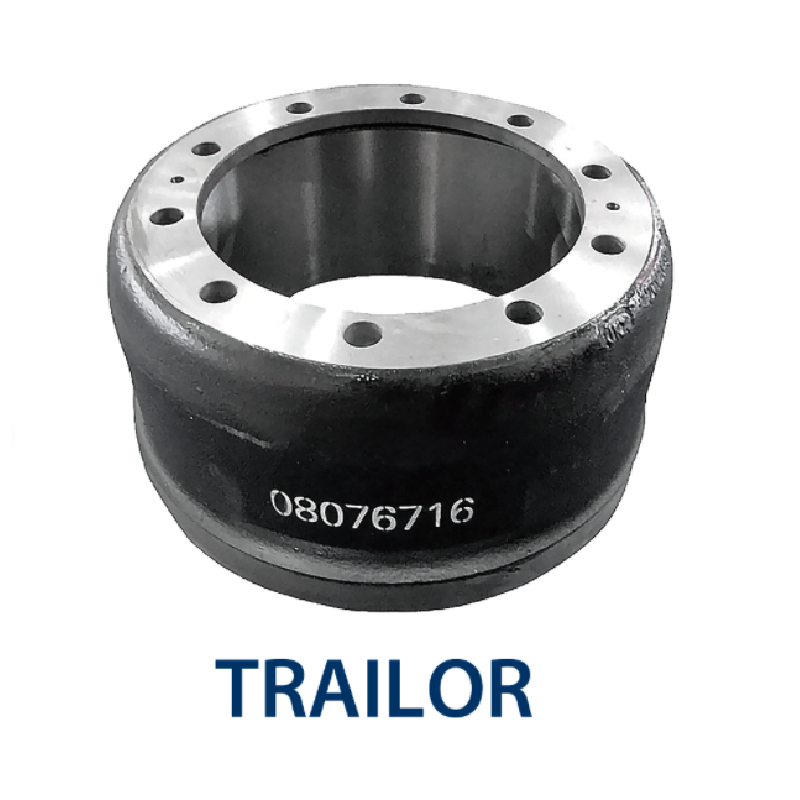డిసెం . 05, 2024 10:14 Back to list
Understanding Inboard Brake Drums and Their Impact on Vehicle Performance
Understanding Inboard Brake Drums A Comprehensive Overview
In the realm of automotive engineering, the design and functionality of braking systems play a critical role in vehicle safety and performance. One innovative aspect of these systems is the use of inboard brake drums, a configuration that differs significantly from the more conventional outboard designs. This article will delve into the workings of inboard brake drums, their advantages, applications, and considerations for maintenance and replacement.
What are Inboard Brake Drums?
Inboard brake drums refer to a braking system where the drum is mounted inward, closer to the vehicle’s center, often positioned on the differential or axle housing. This contrasts with outboard brake drums, which are located further out towards the wheel hub. Inboard designs are commonly found in performance and specialty vehicles, such as race cars and certain off-road vehicles, primarily due to their unique benefits.
Advantages of Inboard Brake Drums
1. Reduced Unsprung Weight One of the primary advantages of inboard brake drums is the reduction in unsprung weight. By placing the brake components closer to the vehicle's center, the weight that must be suspended by the vehicle's suspension system is decreased. Less unsprung weight typically enhances ride quality and handling, allowing for better traction and improved responsiveness.
2. Improved Heat Dissipation Inboard brake drums are usually better ventilated than their outboard counterparts. Being located closer to the vehicle's body allows for improved airflow around the brakes, which can aid in heat dissipation. This is particularly beneficial during high-performance driving, where brake systems endure extreme temperatures due to prolonged friction.
3. Enhanced Protection The design of inboard brake drums provides an additional layer of protection from external elements such as dirt, water, and road debris. This can result in less corrosion and wear over time, leading to potentially extended brake life and reduced maintenance costs.
4. Space Efficiency Inboard brakes can also free up space within the wheel design. This allows for larger wheels or other performance components to be integrated without compromising the vehicle’s overall design and aesthetics.
Applications of Inboard Brake Drums
inboard brake drums

Inboard brake drums are predominantly used in specific applications where performance is a top priority. They are commonly found in
- Race Cars The demand for high-speed stability and precise control makes inboard brake systems a favorite among racing enthusiasts. Their ability to reduce weight while maintaining optimal braking performance is crucial on the track.
- Off-Road Vehicles The rugged nature of off-road conditions often leads to obstacles that can damage outboard systems. Inboard brake drums are less exposed, minimizing the impact of rocks, mud, and other debris.
- Heavy-Duty Vehicles Certain heavy-duty trucks and vehicles may utilize inboard brake designs for stability and durability under significant loads. They ensure the weight distribution is better managed while providing substantial stopping power.
Maintenance and Replacement Considerations
While inboard brake drums offer numerous benefits, they are not without their challenges. Maintenance can require more intricate disassembly compared to outboard systems, necessitating a skilled technician’s expertise. Regular inspections are crucial to identify wear and tear, particularly in high-stress applications.
When it comes to replacement, sourcing OEM (Original Equipment Manufacturer) parts is essential to maintain the integrity of the braking system. Drivers must ensure that replacement drums and linings are compatible to prevent performance inefficiencies or safety hazards.
Conclusion
Inboard brake drums represent a sophisticated engineering choice in the automotive industry, offering a unique set of advantages that cater to high-performance and heavy-duty applications. As technology advances, the relevance and efficiency of these brake systems continue to evolve, making them a vital component in the development of cutting-edge vehicles. Understanding their function and maintenance can greatly enhance one’s appreciation for automotive engineering and the critical aspect of safety that braking systems provide.
-
HINO Industrial Solutions - ¡Ң���ຽ��е��������˾ | Advanced Efficiency&Customization
NewsJul.13,2025
-
HINO Industrial Efficiency Solutions - ¡Ң���ຽ��е��������˾
NewsJul.13,2025
-
HINO Industrial Solutions - ¡Ң���ຽ��е��������˾ | Advanced Technology&Reliability
NewsJul.13,2025
-
HINO Industrial Efficiency-Jiangsu Hino Industrial|Productivity Optimization&Cost Reduction
NewsJul.12,2025
-
HINO-¡Ң���ຽ��е��������˾|Advanced Industrial Solutions&Energy Efficiency
NewsJul.12,2025
-
Premium Brake Drum Iveco – Durable Drum Brake Drum & Brake Shoe Solutions
NewsJul.08,2025
